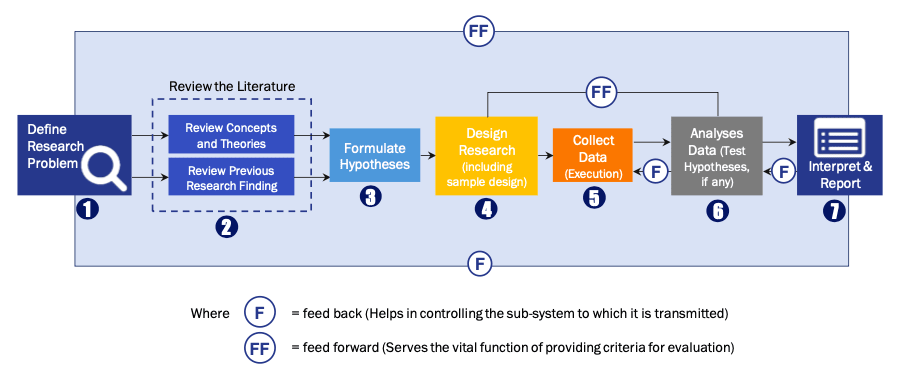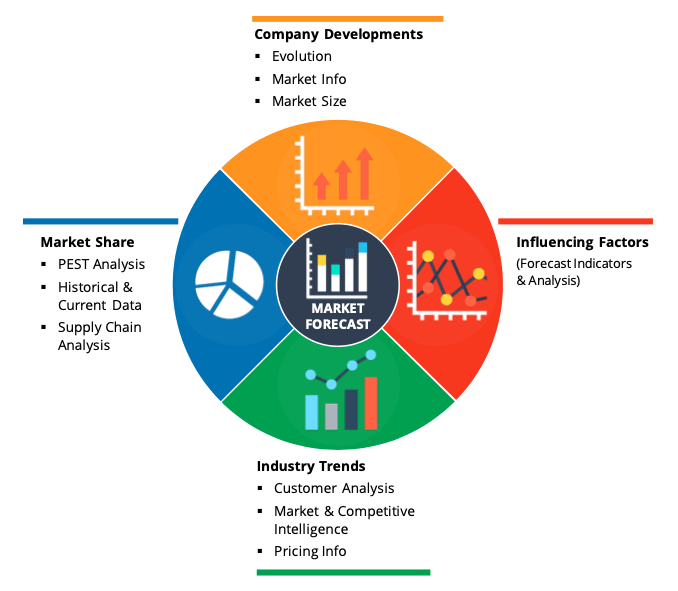Covid-19 Impact on 3D Sensor Market:Like many other industries, COVID-19 badly knocked the electronic and semiconductor industries. This unprecedented event has impacted nearly 230 countries in just a few weeks, resulting in the forced shutdown of manufacturing and transportation activities within and across the countries. This has directly affected the overall sector's growth. It is estimated that COVID-19 to leave more than USD 30 billion impacts on the electronics and semiconductor industry. The sector is majorly affected due to transport restrictions on major electronics and semiconductor raw material providers. However, the emerging need for semiconductors in several industries will offer rapid market recovery over the future period.
Market Overview3D sensors comprise of devices that respond to an external environment in three dimension by building 3D maps of users surrounding. These sensor are the combination of different detecting elements such as TOF, ultrasound, and structured light technologies. Increasing demand for the gesture analysis application, these sensor plays significant role in improving the efficiency and performance of large complex system in the sectors such as electronics and automotive.
Continuous advancements in the camera technology and the demand for the 3D sensors in gaming technology are key factors leading to the market growth. Restoration cost and high maintenance of 3D sensor is a key market challenge. The use of 3D motion detection for the indoor navigation, particularly in media applications by using making 3D sensor and cameras compatible with the nanotechnology across range of the applications which offer major growth projections for the market.
Segment OverviewIn 2017, global sales value of the passenger cars hit more than 78 million vehicles. Along with the China, the U.S. became one of most important automobile markets globally, in terms of production and sales. Above 6.3 million traveller cars were sold to the U.S. customers in the year 2017, and about four million cars were created in country in the same year. The automotive and car sector is one industry, which is expected to be affected considerably by 3D modelling market, therefore, boosting 3D sensor market.
Additionally, increased use of the 3D technology in R and D department of the locomotive industry propels the growth prospects for market in Europe, particularly in Germany and the UK. The technology is utilized to engineer and design new vehicle models.
Regional OverviewGeographically, global 3D sensor market is dominated by North America. In North America, the U.S. is likely to be the leading and also the fastest growing market, due to the abundant demand coming from automotive sectors and consumer electronics, which have been using 3D sensors for many applications in their domains.
Furthermore, Apple's product, iPhone playing significant role in growing the demand for the smartphones in the U.S. Similarly, Canada, a trend of individuals keen on trying the innovative technology is on the rise.
Competitor overviewThe market is a moderately competitive. However, with enhanced sustainable products and innovations, to preserve their position in the international market, numerous of the players are growing their market existence by securing new deals by tapping new markets.
In June 2019, Infineon announced 3D image sensor solution for mobile device market, REAL3 IRS2381C. The image sensor delivers secure, premium, real-time 3D observing experience that provides exceptional performance irrespective of the lighting conditions, comprising outdoor.
In, January 2018, Intel released 2 ready-to-use RealSense cameras, the D435 and the D415, that allow developers to build the 3D depth sensing to any design, however they are also prepared to be embedded into the high-volume products.
Key Players
- Intel Corporation
- Occipital Inc.
- SoftKinetic SA
- Sick AG
- LMI Technologies
- Infineon Technologies AG
- XYZ Interactive Technologies
- OmniVision Technologies
- Panasonic Corporation
- Cognex Corporation
Market SegmentationBy Technology
- Stereo Vision
- Structured Light
- Time of Flight
- Ultrasound
By Type
- Image Sensor
- CMOS 3D Image
- Sensor
- Position Sensor
- Acoustic Sensor
- Accelerometer Sensor
By Application
- Consumer Electronic
- Healthcare
- Automotive
- Others
By Geography
- North America
- Europe
- UK
- Germany
- France
- Italy
- Spain
- Rest of Europe
- Asia-Pacific
- Japan
- China
- India
- Australia
- South Korea
- Rest of Asia-Pacific
- LAMEA
- Brazil
- Saudi Arabia
- UAE
- Rest of LAMEA
Research Process
Data Library Research are conducted by industry experts who offer insight on
industry structure, market segmentations technology assessment and competitive landscape (CL), and penetration, as well as on emerging trends. Their analysis is based on primary interviews (~ 80%) and secondary research (~ 20%) as well as years of professional expertise in their respective industries. Adding to this, by analysing historical trends and current market positions, our analysts predict where the market will be headed for the next five years. Furthermore, the varying trends of segment & categories geographically presented are also studied and the estimated based on the primary & secondary research.
In this particular report from the supply side Data Library Research has conducted primary surveys (interviews) with the key level executives (VP, CEO’s, Marketing Director, Business Development Manager
and SOFT) of the companies that active & prominent as well as the midsized organization
FIGURE 1: DLR RESEARH PROCESS

Primary Research
Extensive primary research was conducted to gain a deeper insight of the market and industry performance. The analysis is based on both primary and secondary research as well as years of professional expertise in the respective industries.
In addition to analysing current and historical trends, our analysts predict where the market is headed over the next five years.
It varies by segment for these categories geographically presented in the list of market tables. Speaking about this particular report we have conducted primary surveys (interviews) with the key level executives (VP, CEO’s, Marketing Director, Business Development Manager and many more) of the major players active in the market.
Secondary Research
Secondary research was mainly used to collect and identify information useful for the extensive, technical, market-oriented, and Friend’s study of the Global Extra Neutral Alcohol. It was also used to obtain key information about major players, market classification and segmentation according to the industry trends, geographical markets, and developments related to the market and technology perspectives. For this study, analysts have gathered information from various credible sources, such as annual reports, sec filings, journals, white papers, SOFT presentations, and company web sites.
Market Size Estimation
Both, top-down and bottom-up approaches were used to estimate and validate the size of the Global market and to estimate the size of various other dependent submarkets in the overall Extra Neutral Alcohol. The key players in the market were identified through secondary research and their market contributions in the respective geographies were determined through primary and secondary research.
Forecast Model


